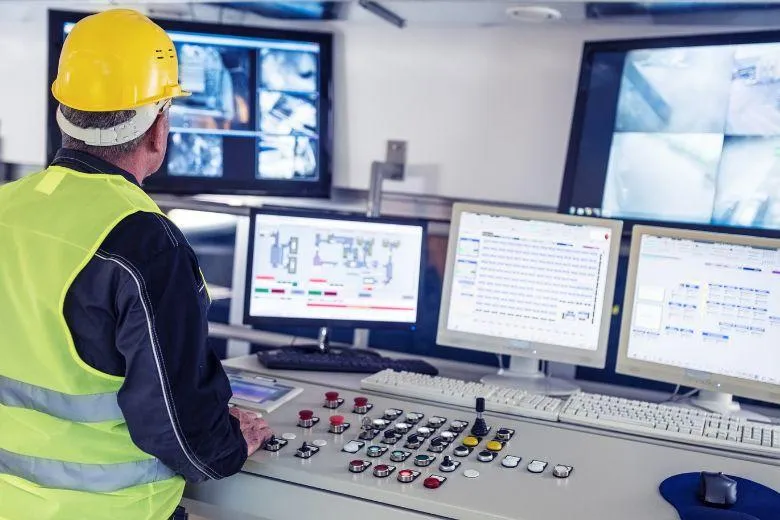
Centralized vs. Decentralized Maintenance: What’s Best for Multi-Site Facilities?
Effective facility maintenance management plays a critical role in driving operational efficiency, ensuring safety, and extending the lifespan of assets across multiple sites. For organizations managing a network of commercial buildings, manufacturing plants, distribution centers, or retail outlets, one of the biggest strategic decisions involves choosing between a centralized or decentralized maintenance model. Each approach comes with unique benefits and challenges—impacting everything from response time to resource allocation and cost-efficiency.
In this comprehensive guide, we explore both approaches, compare their implications for multi-site facilities, and present the technologies and solutions that streamline maintenance operations—empowering organizations to make informed, data-driven decisions.
Understanding Centralized Maintenance in Multi-Site Operations
Centralized maintenance is a model where maintenance operations are managed and coordinated from a single headquarters or command center. In this structure, decision-making, workforce management, inventory control, and preventive maintenance scheduling are handled centrally.
Key Advantages of Centralized Maintenance:
Standardization of Processes: Central oversight ensures that maintenance procedures, compliance checks, and reporting follow uniform standards across all locations.
Data Consolidation: A centralized Computerized Maintenance Management System (CMMS) enables real-time visibility into asset performance, maintenance history, and work orders across all sites.
Resource Optimization: Tools, spare parts, and skilled personnel can be distributed efficiently, minimizing duplication and reducing waste.
Improved Vendor Management: Centralized procurement of services and parts allows for bulk purchasing, better vendor relationships, and cost savings.
Technologies Supporting Centralized Maintenance:
We recommend implementing platforms like web-based CMMS solutions, IoT-enabled building controllers, and remote monitoring systems to manage facility operations from a central hub. Platforms such as the WebCTRL® Building Automation System by Elliott Controls provide seamless integration across HVAC, lighting, and energy management systems in multiple buildings.
These systems allow facilities teams to remotely:
Monitor system performance and alerts
Schedule preventive maintenance
Access analytics and reporting
Perform diagnostics and system resets
With controllers like the OptiFlex™ family, facilities managers can deploy intelligent, scalable controls that report data back to a centralized interface, improving visibility and responsiveness.
Decentralized Maintenance: On-Site Agility and Local Autonomy
Decentralized maintenance empowers individual facilities or regions to manage their own maintenance teams, equipment, and service providers. This model is particularly common in industries that require quick on-site response, unique equipment per location, or heavy machinery with location-specific regulations.
Key Advantages of Decentralized Maintenance:
Faster Response Times: Local teams can respond immediately to maintenance issues, minimizing downtime.
Location-Specific Expertise: Technicians familiar with the facility’s unique systems and equipment often provide more effective repairs and preventive care.
Operational Flexibility: Facility managers can adjust schedules and procedures based on site-specific needs or seasonal demand.
Technology Enablers for Decentralized Maintenance:
While decentralized models offer agility, they require robust local support and real-time communication tools. Deploying edge-level building controllers like ZN and SE Controllers from Elliott Controls provides site-specific control and diagnostics for HVAC and equipment without relying solely on central servers.
To ensure consistency across decentralized teams, organizations can implement:
Cloud-based CMMS platforms with mobile access
Mobile field service apps for tracking work orders
Wireless building automation devices for localized control
Asset tracking and tagging systems for equipment visibility
These solutions allow each facility to manage maintenance autonomously while still syncing essential data with the corporate CMMS.
Centralized vs. Decentralized: Side-by-Side Comparison

Hybrid Maintenance Strategy: The Best of Both Worlds
Many modern enterprises adopt a hybrid maintenance model, blending the best elements of centralized control with decentralized execution. Under this model:
Central headquarters manages strategy, systems, and procurement.
Local teams handle daily operations, inspections, and emergency maintenance.
Unified platforms like Elliott Controls’ WebCTRL® ensure consistency in building management while offering real-time local control.
For instance, central staff can schedule predictive maintenance across all facilities, while on-site technicians execute tasks using mobile CMMS tools synced with central databases.
This hybrid approach is especially valuable for:
Retail chains
Logistics and warehouse facilities
Healthcare networks
Educational institutions
Franchises
Maintenance KPIs to Monitor Across Models
Whether centralized, decentralized, or hybrid, performance should be measured through defined Key Performance Indicators (KPIs) such as:
Mean Time to Repair (MTTR)
Planned Maintenance Percentage (PMP)
Work Order Completion Rate
Energy Consumption per Facility
Unscheduled Downtime Hours
Maintenance Cost per Asset
By integrating these KPIs into a centralized dashboard powered by WebCTRL® and OptiFlex™ Controllers, facilities managers can benchmark locations, detect inefficiencies, and refine strategies continuously.
Choosing the Right Strategy for Your Facilities
The decision between centralized and decentralized maintenance depends on a combination of factors:
Number of locations
Geographic spread
Type and complexity of assets
Regulatory requirements
Availability of skilled local labor
IT infrastructure and connectivity
Facilities that prioritize uniform service levels, centralized reporting, and cost control often lean toward centralized or hybrid strategies. Meanwhile, those requiring agility and hands-on response, especially in mission-critical environments, may benefit from a decentralized structure with strong digital support.
Conclusion
For multi-site facility operators, the maintenance strategy must align with both organizational goals and operational realities. A centralized approach offers efficiency, consistency, and control, while a decentralized model delivers agility and localized expertise. The optimal solution often lies in a hybrid approach, powered by intelligent building automation platforms like Elliott Controls’ WebCTRL®, and edge-to-cloud maintenance tools that unify data, processes, and people.
By leveraging the right technology and strategic model, facility managers can drive down operational costs, improve uptime, and enhance long-term asset value—no matter how complex their footprint.

